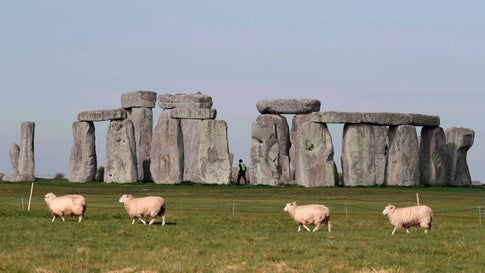Archaeologists Find
Archaeologists Find Massive New Piece of Stonehenge Puzzle
By Jan Wesner Childs
Archaeologists surveying an area near England's famous Stonehenge have found what could be one of the largest prehistoric sites known to exist in the country.
The discovery consists of 20 underground pits built in a 1.2-mile-wide circle, according to a news release from Bradford University. Each is a deep, wide shaft measuring up to 15 feet down and 30 feet across. The series of pits form a ring around Durrington Walls, the site of a large Neolithic settlement that is part of the Stonehenge World Heritage Site.
Researchers at the site first thought they were ponds or natural sinkholes, but thermal imaging was able to reveal more details. They've also found carbon-dated artifacts in the pits that date back about 4,500 years.
He called them a pattern on "a massive scale."

The findings were recently published in the journal Internet Archaeology.
Stonehenge and its stone circles are a World Heritage Site and, along with other adjacent locations, is the most famous prehistoric monument in the world, and widely considered to be the most important.
Like Stonehenge itself, no one knows for sure why the pits were dug or what their significance was. But they do know that Durrington Walls was a settlement for the builders of Stonehenge.
Researchers estimate there may have originally been more than 30 pits, and say their size is another example of the complexity of structures within Stonehenge.
“The Stonehenge landscape stands apart, not only as one of the most important archaeological landscapes in the world, but also amongst the best studied," said Eamonn Baldwin, a researcher from the University of Birmingham who worked on the project. "To make such a major discovery within such an area is remarkable, and testament to how archaeologists have begun to integrate technology with traditional research methods, including excavation and aerial photographic survey.”
/book-of-magic--tarot-cards-on-fortune-teller-desk-table--future-reading-concept--930385224-5ac915baff1b780037240c7d.jpg)